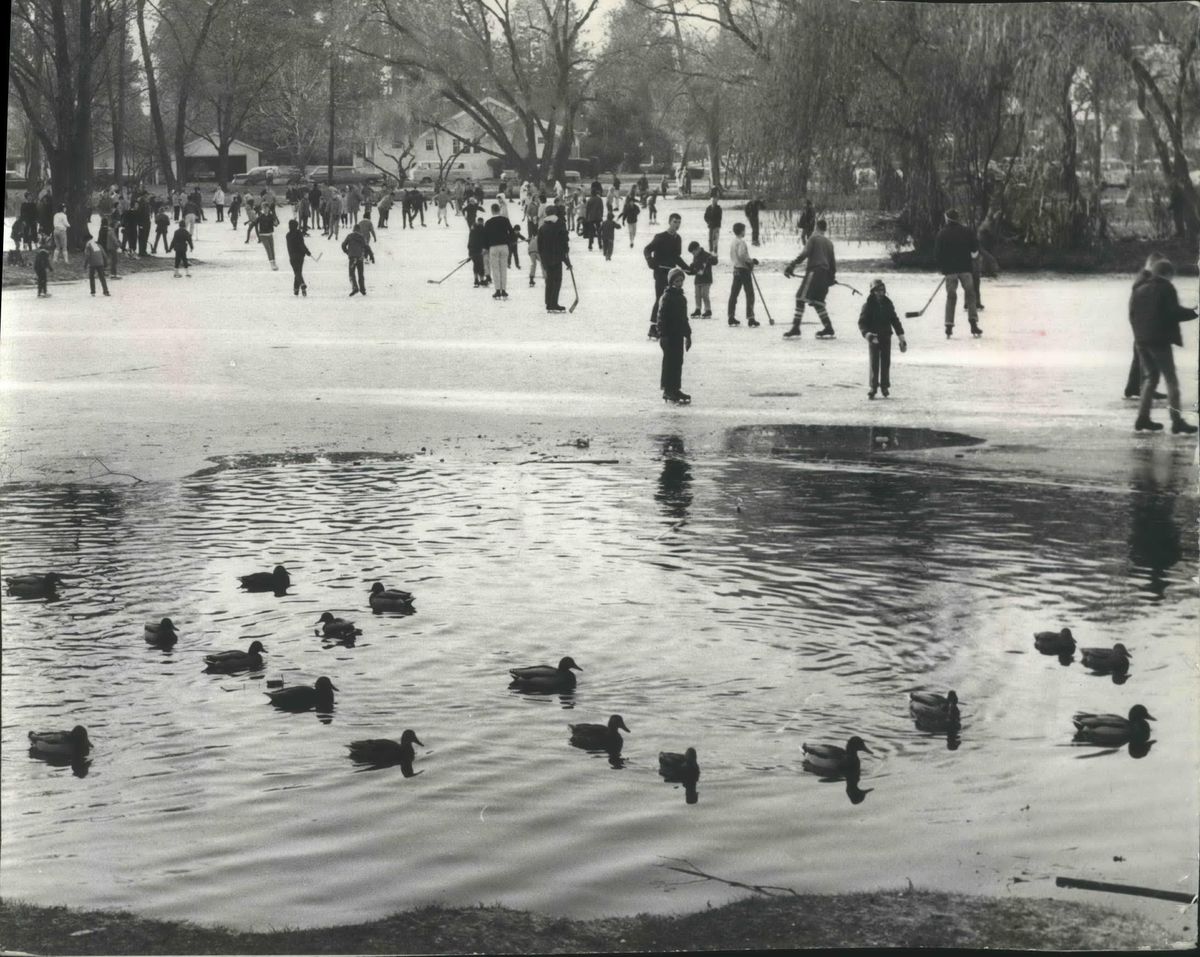Then and Now: Manito duck pond

Francis Cook came to Spokane from Tacoma in 1879 to run the town’s first newspaper, The Spokan Times. It would be a few years before the town name included an “e.”
Cook was also an entrepreneur. He invested in 160 acres on the South Hill and laid out streets for development. In the middle of the property was a large pond he named Mirror Lake. It was a natural basin fed by springs and stretched from Browne Street to Grand Boulevard. He called the area Montrose, a reference to the wild roses that grew there.
Cook built an early streetcar, the Spokane and Montrose Motor Railroad, to bring potential homebuyers up the hill. He hosted the city’s first fair near the pond in 1886.
Cook was heavily mortgaged when the financial panic of 1893 struck. He lost his South Hill land and the streetcar system. He moved to a rural area in north Spokane and started over.
Eventually, mining investor and railroad builder Jay P. Graves took over Cook’s holdings. One of Graves’ first acts, after changing the area’s name from Montrose to Manito, was to donate the land for a park in 1903. The donation wasn’t altruistic. In exchange, the city was expected to extend water mains to the surrounding neighborhood to help develop the area.
Mirror Lake was always popular for fishing and winter recreation. There was a pavilion for dances, and canoes could be rented. But the east extension, more of a canal, dried up in the summer and water in the main body of the pond seeped into nearby homes. So in 1912, the city reinforced the west and north sides of the pond with concrete. The canal was filled in over the years, and in 1974, the east end of the pond was finished with a concrete wall and walkway. Thousands of Spokane residents have fed ducks and geese from that spot. Fishing was banned in 1961 to protect the waterfowl.
Aesthetic changes came after the 1996 ice storm toppled or damaged dozens of trees. Many of the old trees were taken out and replaced with new plantings, which are still maturing.
In their book, “Manito Park: A Reflection of Spokane’s Past,” authors Tony and Suzanne Schaeffer Bamonte write that the pond “has always been a place of beauty, a sparkling jewel in the heart of the Manito neighborhood.”
– Jesse Tinsley